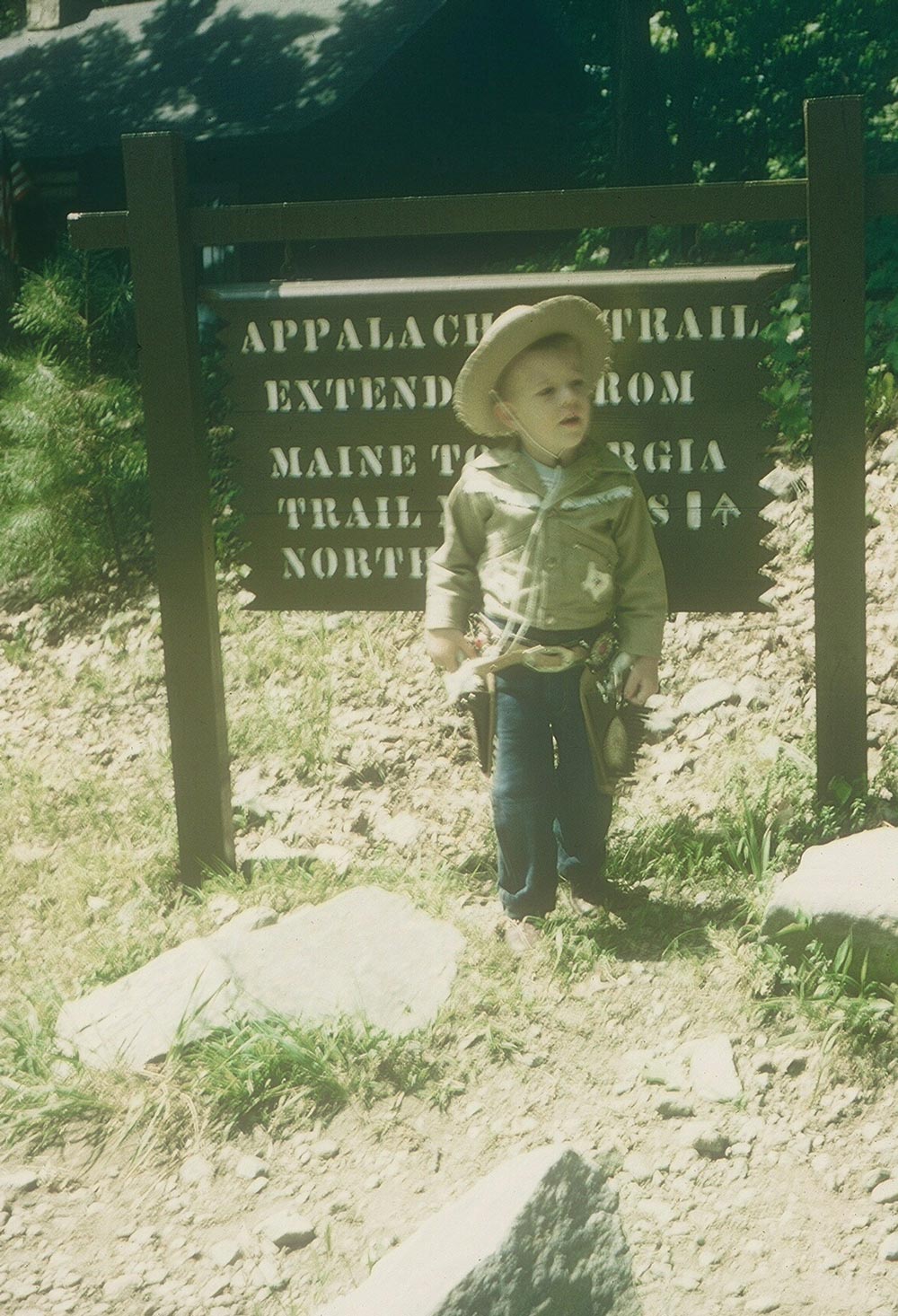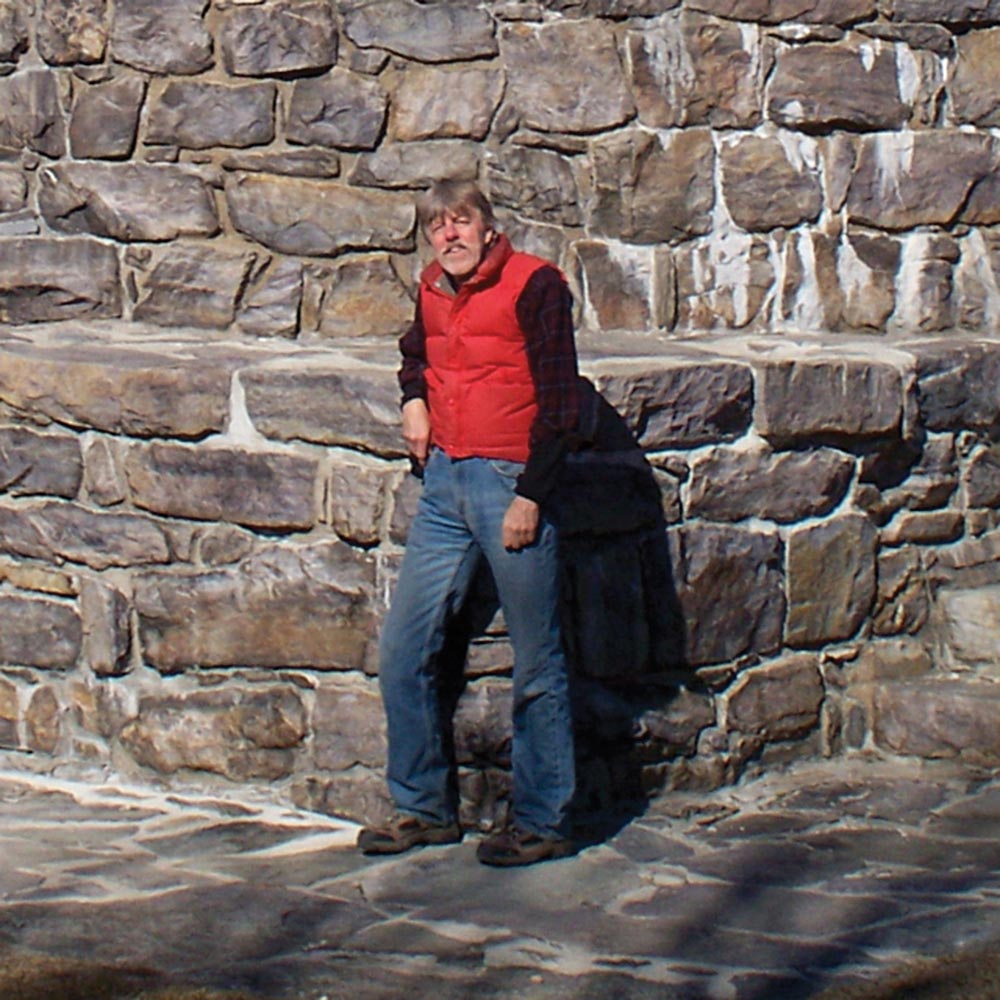Trail Stories
Growing Up A.T.
Living close to the Trail ensures a lifetime of short treks and big memories
By Dave Kirkwood

The author at Washington Monument State Park in 1958
Fall 2016 issue of A.T. Journeys, about a family who drove nine hours to walk a 1.3-mile section of the Appalachian Trail, I became introspective. I and thousands of others with the A.T. in their proverbial back yards don’t know how lucky we are. Hikers come from hundreds or even thousands of miles, from across the U.S. and foreign countries, to seek the famous Trail while those of us who live relatively close at hand, or should I say foot, often take it for granted. I grew up and spent my entire life in close proximity to the Trail with very little thought about how special a place it really was. The article made me stop and think how much of my life has been influenced by — so much more than just a trail — the A.T.
My association with the A.T. began as far back as I can remember when my parents would take me picnicking, from our row-house in Baltimore, to places like Harpers Ferry, West Virginia and Washington Monument State Park in Maryland. Near Harpers Ferry, we would picnic at tables right along the road on the Virginia side of the Route 340 bridge over the Potomac River. At that time, the Trail crossed that same bridge and passed right in front of the picnic area before ascending Loudoun Heights on its way south. Neither the picnic tables nor the Trail are still present in that spot today. At Washington Monument State Park, which we always referred to as South Mountain, the Trail went directly past our favorite picnic pavilion and on to pass the site of the oldest monument to George Washington. The monument was built in 1827 by approximately 500 citizens from the town of Boonsboro. The group ascended the mountain during a Fourth of July celebration to construct the original 30-foot structure.
It was on these trips that I remember my father describing the Appalachian Trail as an old Indian path where Native runners could carry messages from north to south, from tribe to tribe, in an amazingly short period of time. Standing there on the Trail, knee high in leaves, I believed I stood in the unaltered route that those braves traveled. It seemed to me to go on forever in either direction.
When I was eleven, in the mid-1960s, I joined the Boy Scouts and began hiking the A.T. in earnest. My first 20-mile hike was on the same section of Trail I first marveled at years before, between Washington Monument and Lamb’s Knoll, the highest point on the A.T. in Maryland. Not content with retracing our steps, the hike back took on a circuitous route through farm fields using the monument as a visual goal. A final scramble up the rocky slope to the summit reunited us with the A.T. and our camp.
Every winter, our Troop would backpack the A.T. from Gathland State Park, in Maryland, south to Harpers Ferry, camping overnight along the way. I look back with admiration for the endurance of youth, carrying our official frameless rucksacks with padless shoulder straps stuffed with all manner of overweight items. Today’s ultralight backpackers would cringe. The shapeless canvas pack held an overweight cotton sleeping bag, rolled lengthwise and lashed around the sides and top of the pack, Civil War style. Had nothing changed in the world of backpacking for the past one hundred years? We each carried half of a war surplus “duck” canvas pup tent, which assembled with buttons along the ridge. Many sleepless, rainy nights were spent contemplating the wisdom of that design. Our adolescent appetites compelled us to carry cans of Dinty More beef stew, Chef Boyardee spaghetti, Vienna Sausages and, who could forget, Spam. The latter two were roasted on sticks, over the campfire, where gasoline-like juices sent delight inducing flames into the air with each drip.
Footwear was also impractical, with many boys wearing tennis shoes on the often snow-laced Trail. Then there were the uniforms, ah the uniforms, every Scouts burden to be carried all that way for the required appearance as human beings when marching into town on Sunday afternoon.

The author at Washington Monument State Park in 2017
No matter where I find myself on the A.T., it always feels as familiar to me as the stretch five minutes from my house.
Boy Scout safety standards had also not developed at that time. We hiked unsupervised, being dropped off at the A.T. trail-head by several of the adult leaders. You see fathers in those days were often a long working, hard drinking, chain smoking lot, think Mad Men, who’s ability or willingness to hike miles of Trail were limited. On Sunday, at the Route 340 bridge between Maryland and Virginia we would leave the A.T. to follow the railroad tracks into a tunnel before crossing the Potomac River to our destination, since the Trail did not go through the historic town of Harpers Ferry in those days. In the privacy of the tunnel we would change into our crumpled uniforms, as required by the adults waiting on the other side. We would then march, in all our disheveled glory, across the railroad bridge into town. There was no dedicated pedestrian extension in those days, where the current A.T. crosses the river, so we straddled the wooden boards alongside the tracks hoping no train would come along to vibrate us off the bridge and into the river. Once in town, we would climb to the Hilltop House to reunite with the adults and the reward of an all-you-can-eat fried chicken dinner with all the trimmings. This was the hotel restaurant’s special every Sunday afternoon and our filthy rabble, clean uniforms aside, no-doubt thrilled the well dressed, after church, regulars. The establishment, I’m sure, was equally pleased when twenty or so teenage boys devoured everything in sight and sent the days revenues into the red.
As an adult, I traveled farther afield to hike all the A.T. within a day’s travel of my home. I eventually completed all of the Trail from central Pennsylvania to the southern end of Shenandoah National Park in Virginia. Over the years, I also hiked the A.T. in the White Mountains of New Hampshire, the northern terminus at Kathadin in Maine and, most recently, the southern terminus at Springer Mountain in Georgia. I was visiting friends at their home in southwestern North Carolina when they took me out for a day hike. I was pleasantly surprised when we pulled up the parking area for Springer not knowing that we were so close to Georgia, much less the famous mountain where so many begin their thru-hike of the Appalachian Trail.
I now live, at the base of Lamb’s Knoll in Maryland, a few miles from the Trail as the crow flies. I maintain one of the Potomac Appalachian Trail Club cabins there. I hike most Wednesdays with the Mountain Club of Maryland, who frequent the Trail in this and adjacent states. Rarely a month goes by that I haven’t set foot on some small portion of the 2,190-mile Trail. No matter where I find myself on the A.T., it always feels as familiar to me as the stretch five minutes from my house. I guess it is the realization that no matter where I am on the Trail, if I follow it in the right direction of course, it will always lead me home.
When all is said and done the Trail has been an important part of my life without ever completing a thru or section hike or, for that matter, even hiking all that much of it. You see, unlike those who come thousands of miles to follow their dreams of hiking the entire Trail or drive nine hours for a 1.3-mile jaunt, for those of us who live close by, it’s just there. It has always been there, at least in my lifetime, and it will always be there, thanks to the efforts of thousands of individuals working tirelessly to assure it protection and maintenance. For us, the Appalachian Trail is part of who we are, our lives are changed by spending so much time on or near it and we would be different people without its presence.